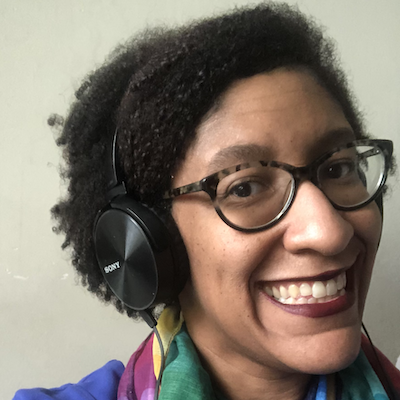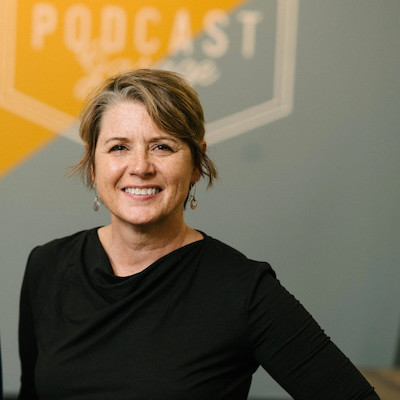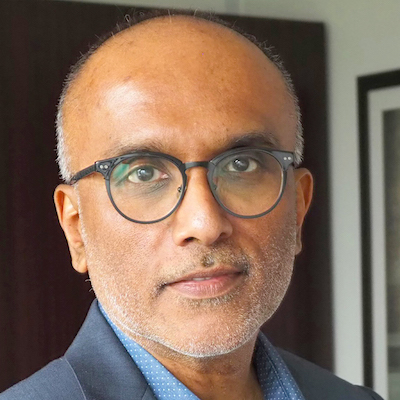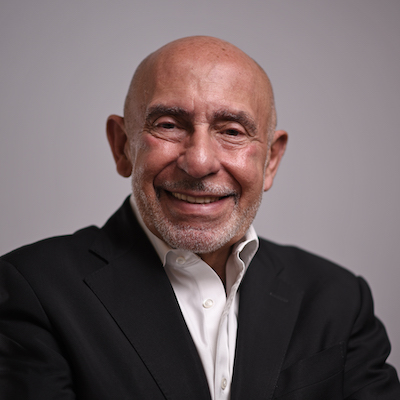When care becomes a core tenet of journalism
“You have a lot of tension in all your muscles,” my masseuse said as she poked and prodded my back. A friend had recommended a deep tissue massage, and unlike my usual shiatsu, a deep tissue massage gets in there (as the name implies) as the practitioner works underneath the muscles and bones to work out underlying points of tension. And with each ouch I yelped, I felt a release of stress I only later realized I’d been carrying with me. By the end of the hour-long session, I was a puddle of tears as the magnitude of living through the past two years washed over me.
In The Guardian recently, Emma Kavanagh wrote eloquently about the effects of an ongoing invisible threat on our emotional well being:
These past two years have pushed us to our limits and, at times, beyond. We have lived in an environment of constant and invisible threat. That sense of threat triggers the limbic system. The limbic system is awesome: it conveys information to us without it having to take the long route through the more sophisticated parts of our brain. That means that we can react to things in an instant — that old gut feeling…
Our prefrontal cortex, that sophisticated part, is losing out in the great brain battle. It shows less activity when we’re under stress. And so we become more error-prone, find rational thinking harder, decisions too complicated to process. And so, when the limbic system is in charge, what is left is emotion.
Societies can experience significant changes during pandemics that often become obvious in retrospect. In the public at large, Covid-19 has been changing the conversation about mental health in important ways that have become more clear between now and 2019. These issues aren’t new — many people have struggled with these challenges before Covid-19 — but there’s a noticeable shift in the field of journalism especially. After two years of mass death, violence and environmental destruction in the headlines, trauma, pain and anxiety feel increasingly at the forefront of journalism right now, both for our audiences and for ourselves.
Trauma and mental health, of course, have been a deep part of journalism’s conversations for years. P. Kim Bui wrote eloquently in 2016: “Empathy takes time, as Caitlin Dewey noted last month, and in the age of social media, that is hard. It takes longer to report on a story with empathy. But it is a worthwhile choice. Empathy could improve the mental health of newsrooms, allowing us to say to one another that we were angered, bothered, saddened by something, and work through that with each other and our audiences.” In 2015, a guide by the Dart Center for Journalism and Trauma reminded us that “however compelling its news value, traumatic imagery needs to be handled with care, as it can place the wellbeing of those who work with it at risk.”
That said, the past couple years have marked an increase in the severity of the conversation. Last year, Meera Selva and Anthony Feinstein at the Reuters Institute of Journalism surveyed journalists for international news organizations and found that the “majority of our respondents, around 70 percent, suffer from some levels of psychological distress.” Julie Posetti, Emily Bell, and Pete Brown at the Tow Center and ICFJ found similar distressing statistics, finding “an urgent need for mental health support and interventions to help alleviate burnout.”
Statistics are just one part of the story — it is listening to the stories that we start to grasp the magnitude of the heartbreak. At the American Psychological Association, Rebecca A. Clay observed how many newscasters have cried on air: “Those tears are just one sign of the trauma being experienced by journalists covering the Covid-19 pandemic, both in the field and in the newsroom. And that trauma can lead to mental health challenges.” Breaking news has broken us, as psychologist Esther Perel pointed out: “The newsroom is in a state of grief and has suffered tremendous losses over the past year. It is in a state of collective trauma, and journalists are exhausted.”
Earlier this year, I wrote about trauma-informed journalism, and I increasingly wonder what a care-oriented journalism can look like. Can 2022 be a year when care becomes one of journalism’s core tenets? If so, it will require thinking about care in at least a few different ways.
Self-care is only one of many components of care. Community care is equally vital.
While self-care is often touted as essential to a healthy lifestyle, it is only one component. As Bruce Shapiro at the Dart Center observed with Nieman Lab: “More than 20 years of research tells us that the most important factor associated with journalists coping well with crisis is collegial connection and social support and the single most important risk factor is social isolation.” If we want a journalism of care, we need to ensure community and organizational support for individuals who may be struggling with mental health challenges.
True industry-wide changes in care require financial resources and structural support.
Community care requires resources, which means budgets need to allocate those resources. This often means that funders, boards, executives and project managers — anyone who has the ability to influence a budget, really — should make line items for care a part of the planning process. As artist and civic media strategist Deanna Zandt has illustrated, both community care and structural care require a commitment of resources and ongoing support. We can’t get there without the budgets and prioritization that are part of the nuts and bolts of managing organizations and projects, and we can’t get there without systems of support that make those resources readily available.
Care is an equity, diversity and inclusion issue.
The pandemic is only one stressor, and for many people and contexts, long-term stress and anxiety have been a part of daily life long before Covid-19 made headlines. Post-traumatic stress disorder, amongst other mental health challenges like depression and anxiety, appears to be more common amongst women, LGBTQ people, people of color, veterans and people with physical disabilities, all groups traditionally highlighted in diversity, equity, and inclusion (DEI) efforts in journalism organizations. Organizations serious about supporting DEI need to take into account the mental health needs of their teams, and diverse newsrooms need diverse systems of care. More often than not, Covid-19 is exacerbating existing traumas while also creating new ones.
Care belongs in the newsroom and in the news.
Issues of care extend not just to newsrooms but also to how we do the news; our audiences are suffering, too. Jo Healy’s 2019 book Trauma Reporting: A Journalist’s Guide to Covering Sensitive Stories observes that journalists spend hours covering the stories of people’s suffering and are keen to ensure they don’t exacerbate people’s trauma. We live in distressing times, but it’s simply not true that the only news is negative. One simple recommendation for journalists from the US Surgeon General Vivek Murthy is to include “positive messages and stories of hope and healing (particularly when covering pandemics, natural disasters, and incidents of mass violence)” and help the public understand how to effect positive change.
As one recent internet meme goes, “2022 is 2020 too.” Omicron’s arrival has just reminded us that this pandemic is far from over, and Murthy’s Dec. 7 advisory should ring alarm bells for the mental health crisis our youth in particular face.
We’re looking at two long years of ongoing stress, tension, uncertainty and anxiety in our daily lives on top of whatever additional stressors and barriers those of us working in journalism have been facing, with no clear end in sight. As we enter this third year of COVID-19, let’s remember the many facets of care, and let’s remember to extend care to each other.
And yes, let’s still practice self-care, too. I do recommend a deep tissue massage, painful as it is. And please be sure to tip generously.
An Xiao Mina works at Meedan and serves on the board of the News Product Alliance.

“You have a lot of tension in all your muscles,” my masseuse said as she poked and prodded my back. A friend had recommended a deep tissue massage, and unlike my usual shiatsu, a deep tissue massage gets in there (as the name implies) as the practitioner works underneath the muscles and bones to work out underlying points of tension. And with each ouch I yelped, I felt a release of stress I only later realized I’d been carrying with me. By the end of the hour-long session, I was a puddle of tears as the magnitude of living through the past two years washed over me.
In The Guardian recently, Emma Kavanagh wrote eloquently about the effects of an ongoing invisible threat on our emotional well being:
These past two years have pushed us to our limits and, at times, beyond. We have lived in an environment of constant and invisible threat. That sense of threat triggers the limbic system. The limbic system is awesome: it conveys information to us without it having to take the long route through the more sophisticated parts of our brain. That means that we can react to things in an instant — that old gut feeling…
Our prefrontal cortex, that sophisticated part, is losing out in the great brain battle. It shows less activity when we’re under stress. And so we become more error-prone, find rational thinking harder, decisions too complicated to process. And so, when the limbic system is in charge, what is left is emotion.
Societies can experience significant changes during pandemics that often become obvious in retrospect. In the public at large, Covid-19 has been changing the conversation about mental health in important ways that have become more clear between now and 2019. These issues aren’t new — many people have struggled with these challenges before Covid-19 — but there’s a noticeable shift in the field of journalism especially. After two years of mass death, violence and environmental destruction in the headlines, trauma, pain and anxiety feel increasingly at the forefront of journalism right now, both for our audiences and for ourselves.
Trauma and mental health, of course, have been a deep part of journalism’s conversations for years. P. Kim Bui wrote eloquently in 2016: “Empathy takes time, as Caitlin Dewey noted last month, and in the age of social media, that is hard. It takes longer to report on a story with empathy. But it is a worthwhile choice. Empathy could improve the mental health of newsrooms, allowing us to say to one another that we were angered, bothered, saddened by something, and work through that with each other and our audiences.” In 2015, a guide by the Dart Center for Journalism and Trauma reminded us that “however compelling its news value, traumatic imagery needs to be handled with care, as it can place the wellbeing of those who work with it at risk.”
That said, the past couple years have marked an increase in the severity of the conversation. Last year, Meera Selva and Anthony Feinstein at the Reuters Institute of Journalism surveyed journalists for international news organizations and found that the “majority of our respondents, around 70 percent, suffer from some levels of psychological distress.” Julie Posetti, Emily Bell, and Pete Brown at the Tow Center and ICFJ found similar distressing statistics, finding “an urgent need for mental health support and interventions to help alleviate burnout.”
Statistics are just one part of the story — it is listening to the stories that we start to grasp the magnitude of the heartbreak. At the American Psychological Association, Rebecca A. Clay observed how many newscasters have cried on air: “Those tears are just one sign of the trauma being experienced by journalists covering the Covid-19 pandemic, both in the field and in the newsroom. And that trauma can lead to mental health challenges.” Breaking news has broken us, as psychologist Esther Perel pointed out: “The newsroom is in a state of grief and has suffered tremendous losses over the past year. It is in a state of collective trauma, and journalists are exhausted.”
Earlier this year, I wrote about trauma-informed journalism, and I increasingly wonder what a care-oriented journalism can look like. Can 2022 be a year when care becomes one of journalism’s core tenets? If so, it will require thinking about care in at least a few different ways.
Self-care is only one of many components of care. Community care is equally vital.
While self-care is often touted as essential to a healthy lifestyle, it is only one component. As Bruce Shapiro at the Dart Center observed with Nieman Lab: “More than 20 years of research tells us that the most important factor associated with journalists coping well with crisis is collegial connection and social support and the single most important risk factor is social isolation.” If we want a journalism of care, we need to ensure community and organizational support for individuals who may be struggling with mental health challenges.
True industry-wide changes in care require financial resources and structural support.
Community care requires resources, which means budgets need to allocate those resources. This often means that funders, boards, executives and project managers — anyone who has the ability to influence a budget, really — should make line items for care a part of the planning process. As artist and civic media strategist Deanna Zandt has illustrated, both community care and structural care require a commitment of resources and ongoing support. We can’t get there without the budgets and prioritization that are part of the nuts and bolts of managing organizations and projects, and we can’t get there without systems of support that make those resources readily available.
Care is an equity, diversity and inclusion issue.
The pandemic is only one stressor, and for many people and contexts, long-term stress and anxiety have been a part of daily life long before Covid-19 made headlines. Post-traumatic stress disorder, amongst other mental health challenges like depression and anxiety, appears to be more common amongst women, LGBTQ people, people of color, veterans and people with physical disabilities, all groups traditionally highlighted in diversity, equity, and inclusion (DEI) efforts in journalism organizations. Organizations serious about supporting DEI need to take into account the mental health needs of their teams, and diverse newsrooms need diverse systems of care. More often than not, Covid-19 is exacerbating existing traumas while also creating new ones.
Care belongs in the newsroom and in the news.
Issues of care extend not just to newsrooms but also to how we do the news; our audiences are suffering, too. Jo Healy’s 2019 book Trauma Reporting: A Journalist’s Guide to Covering Sensitive Stories observes that journalists spend hours covering the stories of people’s suffering and are keen to ensure they don’t exacerbate people’s trauma. We live in distressing times, but it’s simply not true that the only news is negative. One simple recommendation for journalists from the US Surgeon General Vivek Murthy is to include “positive messages and stories of hope and healing (particularly when covering pandemics, natural disasters, and incidents of mass violence)” and help the public understand how to effect positive change.
As one recent internet meme goes, “2022 is 2020 too.” Omicron’s arrival has just reminded us that this pandemic is far from over, and Murthy’s Dec. 7 advisory should ring alarm bells for the mental health crisis our youth in particular face.
We’re looking at two long years of ongoing stress, tension, uncertainty and anxiety in our daily lives on top of whatever additional stressors and barriers those of us working in journalism have been facing, with no clear end in sight. As we enter this third year of COVID-19, let’s remember the many facets of care, and let’s remember to extend care to each other.
And yes, let’s still practice self-care, too. I do recommend a deep tissue massage, painful as it is. And please be sure to tip generously.
An Xiao Mina works at Meedan and serves on the board of the News Product Alliance.
Richard Tofel

James Salanga

Daniel Eilemberg

Julia Munslow

Tony Baranowski

Joy Mayer

Ståle Grut

Joshua P. Darr

Burt Herman

S. Mitra Kalita

Doris Truong

Shannon McGregor Carolyn Schmitt

Tom Trewinnard

Izabella Kaminska

Kristen Jeffers

Robert Hernandez

Gordon Crovitz

Parker Molloy

Mandy Jenkins

Jesse Holcomb

Millie Tran

James Green

Paul Cheung

Anika Anand

Nik Usher

Rachel Glickhouse

David Cohn

Cristina Tardáguila

Moreno Cruz Osório

Jesenia De Moya Correa

Jennifer Coogan

Mary Walter-Brown

Megan McCarthy

A.J. Bauer

Christina Shih

John Davidow

Simon Galperin

Chicas Poderosas

Victor Pickard

Juleyka Lantigua

Kristen Muller

Sarah Marshall

Anthony Nadler

Julia Angwin

Amara Aguilar

Brian Moritz

Kerri Hoffman

Matt DeRienzo

Gonzalo del Peon

Don Day

Chase Davis

Michael W. Wagner

Laxmi Parthasarathy

Jessica Clark

Kathleen Searles Rebekah Trumble

Joe Amditis

Amy Schmitz Weiss

Whitney Phillips

AX Mina

Catalina Albeanu

David Skok

Alice Antheaume

Cherian George

Stephen Fowler

Matthew Pressman

Rasmus Kleis Nielsen

Meena Thiruvengadam

Candace Amos

Jody Brannon

j. Siguru Wahutu

Natalia Viana

Anita Varma

Joni Deutsch

Matt Karolian

Andrew Freedman

Mike Rispoli

Christoph Mergerson

Ariel Zirulnick

Joanne McNeil

Tamar Charney

Raney Aronson-Rath

Kendra Pierre-Louis

Larry Ryckman

Melody Kramer

Shalabh Upadhyay

Eric Nuzum

Simon Allison

Mario García

Sarah Stonbely

Jennifer Brandel

Sam Guzik

Errin Haines

Wilson Liévano

Gabe Schneider

Stefanie Murray

Jim Friedlich

Jonas Kaiser

Francesco Zaffarano

Cindy Royal

Zizi Papacharissi
